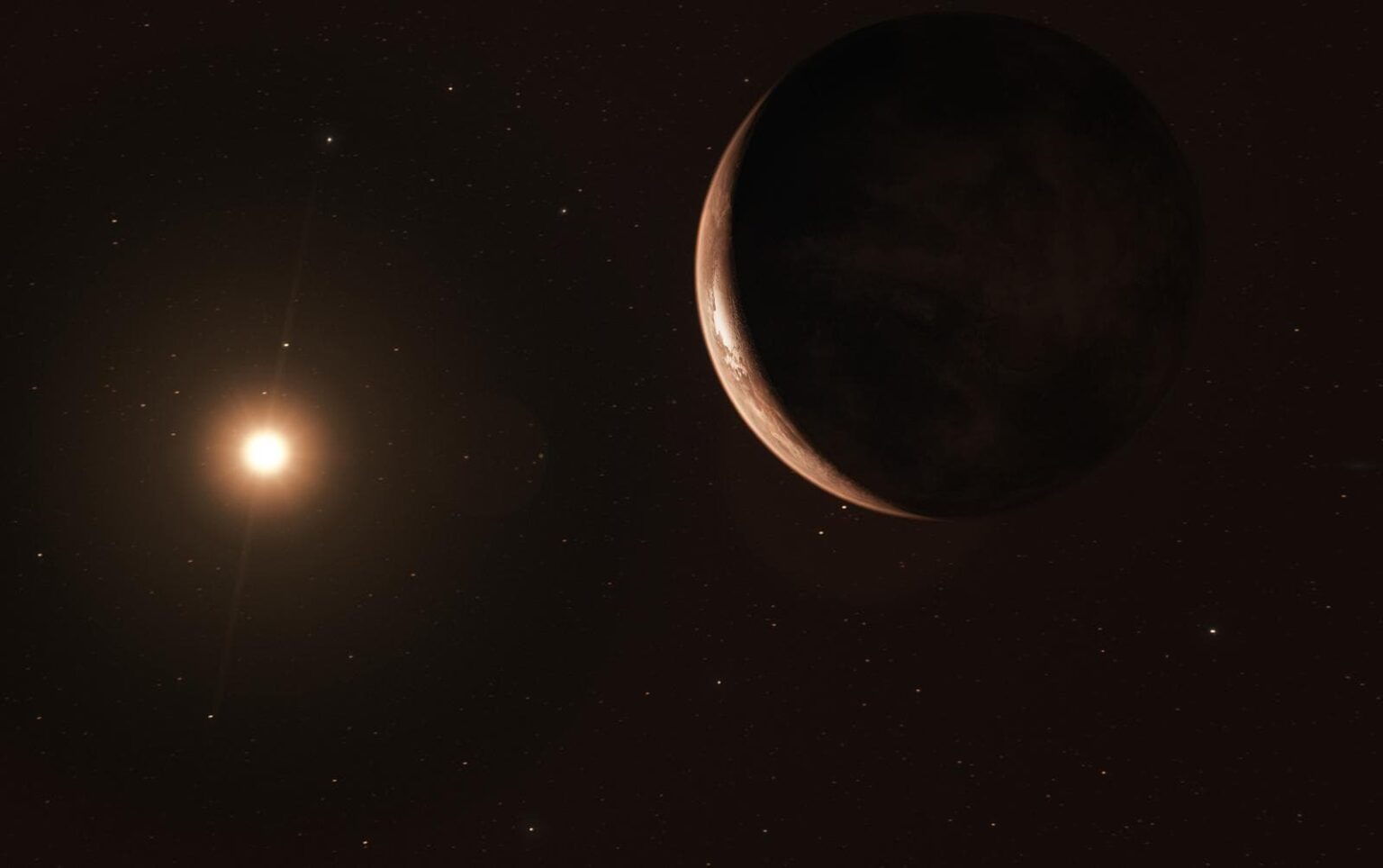Barnard’s star, located at a distance of only six light-years from Earth, is an object of extreme astronomical interest. This red dwarf became famous thanks to the discovery of Edward Emmet Barnard, who discovered this star in 1916. It would seem that such a close star should have been noticed earlier, because its image appeared in photographs taken by the Harvard Observatory back in the late 1800s. However, no one paid much attention to it before Barnard.

Since its discovery, Barnard’s Star has been the subject of intensive research and observations. Barnard’s star is one of the first stars claimed to have planets. Back in the 1970s, studies claimed that the dwarf had gas giants, but there was no consensus among astronomers. Then in 2018, astronomers measured the radial motion of the star, and assumed the presence of a near-orbital super-Earth. The theoretical planet was named GJ 700 b. According to calculations, it is 3.2 times larger than the Earth.
Further observations, however, dispelled this discovery, suggesting that the observed radial oscillations were caused by solar flares. Recent studies have confirmed that Barnard’s Star has no nearby or potentially habitable planets larger than 70% of Earth’s size. This makes it somewhat exceptional among red dwarfs because most of them have planets. For example, the red dwarf star Kepler-42, similar in size and age to Barnard’s Star, has at least three terrestrial planets.

Although Barnard’s Star is not a strong candidate for the existence of alien life, recent studies have paid close attention to it. A 500-meter spherical telescope with an aperture (FAST) was used for this. This Chinese telescope is an impressive object of engineering skill and is similar to the Arecibo Observatory, but much larger. FAST is especially sensitive to frequencies useful for long-distance communication, and therefore it has become an ideal tool for searching for aliens.
During the study, scientists focused their attention on narrow-band radiation that could be detected from an alien civilization if it sent radio signals to us. Special attention was paid to the signals that might have come from Barnard’s b hypothetical planet, given the Doppler shifts due to the relative motion of the star and the Earth.

Unfortunately, the study did not bring any evidence of the existence of an alien signal. However, it was an important test of FAST’s capabilities. Future research aimed at neighboring stars with confirmed planets in habitable zones may have a better chance of success and may bring us important discoveries in the search for other intelligent life in space.
Earlier we explained whether aliens could hear our mobile communication systems.
According to universetoday.com
Follow us on Twitter to get the most interesting space news in time
https://twitter.com/ust_magazine

